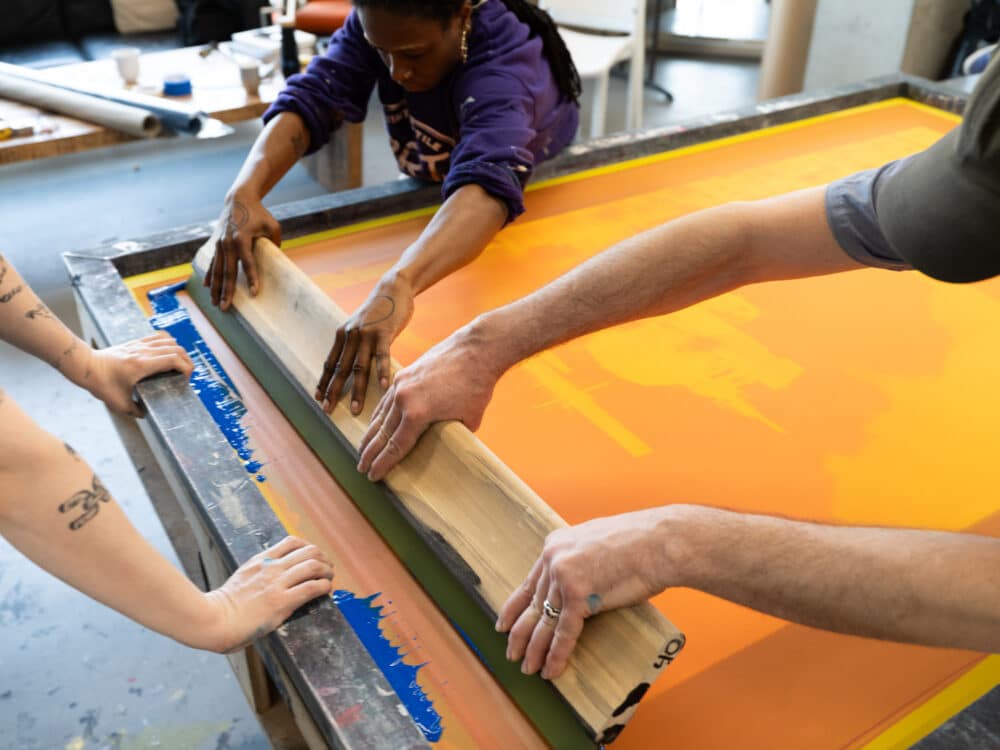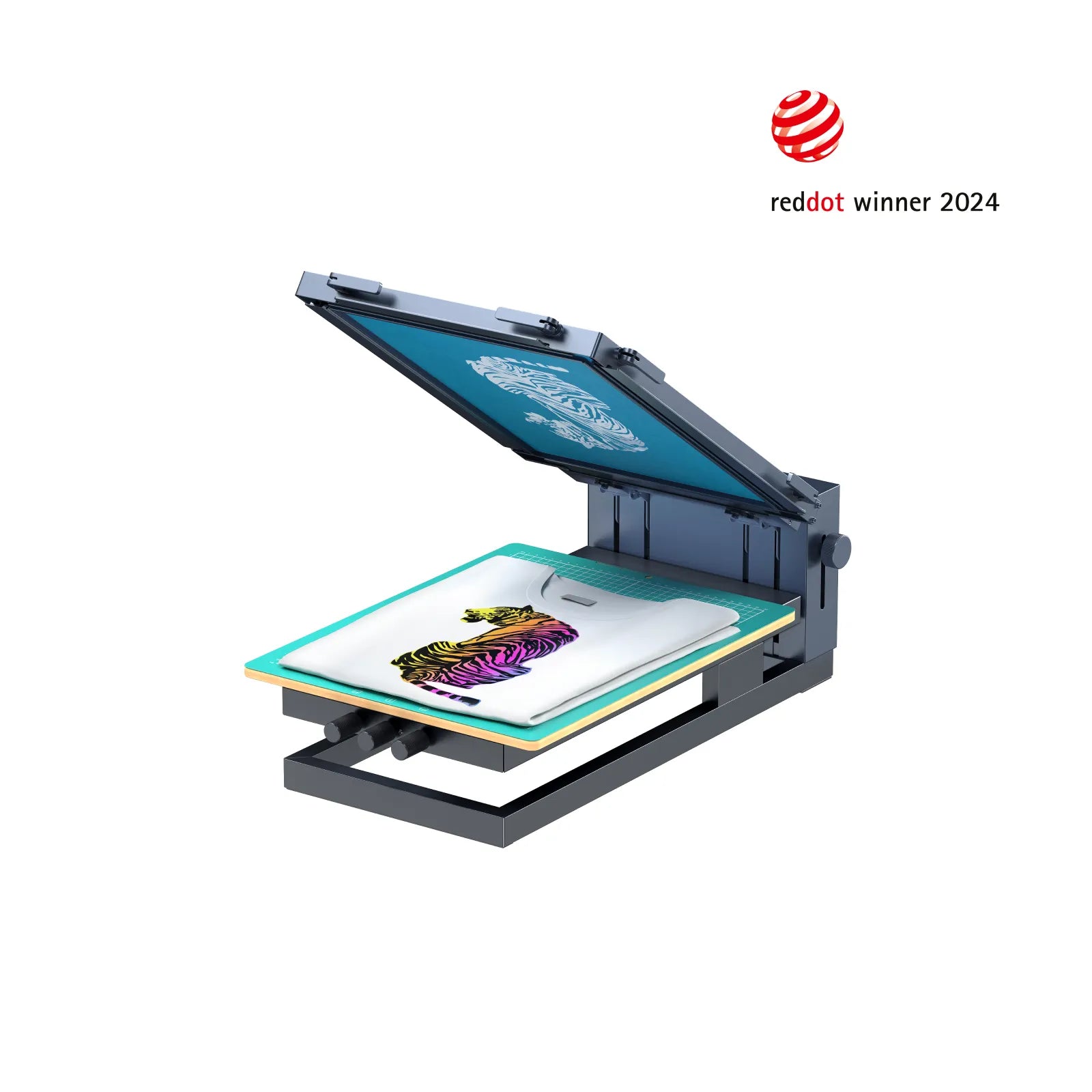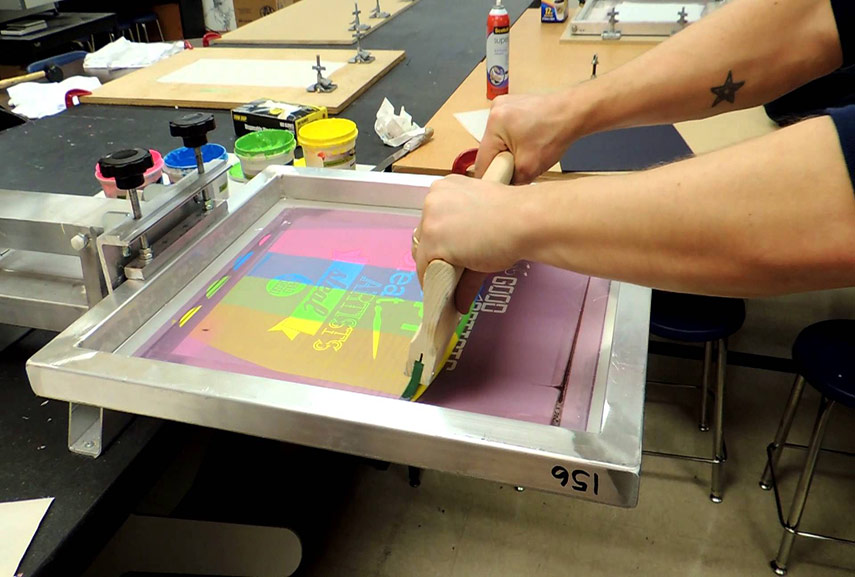The Crucial Guide to Recognizing Screen Printing and Its Versatile Utilizes
Screen printing has an abundant history that dates back to ancient times, evolving into an advanced strategy used throughout different markets today. This overview explores the ins and outs of the screen printing procedure, outlining its applications in marketing, style, and home decoration - 10:9 Design reviews. Recognizing these principles can open up imaginative possibility for both imaginative and business tasks. The following sections will certainly reveal important pointers and strategies to improve one's screen printing undertakings
The Background of Screen Printing
Although screen printing has origins that trace back centuries, its advancement mirrors the imaginative and technical advancements of different societies. Coming from old China, the technique was initially made use of for decorating fabrics and later infect Japan, where it ended up being integral to Ukiyo-e woodblock printing. The technique moved to Europe in the 18th century, where it acquired popularity amongst artisans and business printers. The development of image solution in the 20th century reinvented screen printing, enabling even more complex designs and better effectiveness. Artists like Andy Warhol further propelled its appeal, using the tool to create iconic jobs that blended commercialism and art. By the late 20th century, screen printing had developed itself as a versatile method, utilized in vogue, advertising and marketing, and fine art. Today, it proceeds to develop, incorporating digital modern technology and broadening its applications across different sectors.
The Screen Printing Process Explained
Screen printing changes imaginative visions right into tangible styles through a series of exact actions. A photo is produced and then transferred onto a screen, commonly made of fine mesh material extended over a frame. A light-sensitive emulsion is related to the screen, which is subjected to light, setting in locations not covered by the picture. After washing out the unhardened emulsion, a stencil is developed.
Next off, the screen is positioned over the substratum, whether it be textile, paper, or an additional material. Ink is then pushed through the open areas of the stencil using a squeegee, transferring the layout onto the substratum listed below. This procedure can be duplicated for numerous shades, requiring separate screens for every color. Lastly, the published product is treated using warm to assure the ink adheres correctly, causing a durable, vivid design on-line.
Kinds of Screen Printing Techniques

Additionally, specialized methods, such as discharge screen printing, eliminate dye from the fabric to develop softer prints, while aluminum foil screen printing uses metal foil to achieve a glossy surface (10:9 Design reviews). Each method uses unique qualities, satisfying numerous innovative needs and manufacturing scales, eventually expanding the opportunities within the screen printing domain
Applications of Screen Printing in Numerous Industries

Additionally, the signage and marketing fields utilize screen printing for producing attractive display screens and banners. This method enables strong colors and elaborate styles that record attention. In electronic devices, screen printing is used for applying conductive inks to circuit card, vital for part links. The home decoration market welcomes screen printing to generate unique layouts on fabrics and wall surface art. Overall, screen printing acts as a crucial device throughout varied areas, boosting items with personalized and visually appealing graphics.
Tips for Effective Screen Printing Projects
While taking on a screen printing project, careful interest to detail can considerably boost the final result. First, selecting high-grade materials is necessary; this consists of the screen, inks, and substratums. Making use of appropriate mesh counts can influence ink deposition and information resolution. Prep work is equally important; detailed cleansing of screens and correct direct exposure times ensure crisp prints.
Next, exact enrollment is important for multi-color prints. Using placement tools can aid achieve precise layering. In addition, testing prints on scrap products prior to manufacturing helps identify prospective issues without losing resources.

Frequently Asked Inquiries
What Products Are Ideal for Screen Printing on Material?
Cotton and polyester blends are optimal for screen printing on fabric as a result of their durability and ink absorption. Furthermore, specialty textiles like silk or canvas can create special appearances and finishes, enhancing the general design top quality.
Exactly how Do I Tidy and Maintain Screen Printing Tools?
To clean and keep screen printing tools, one should frequently wash screens with proper solvents, evaluate mops for wear, oil moving components, and store all items in a completely dry, dust-free atmosphere to lengthen their lifespan.
What Are the Environmental Effects of Screen Printing?
Screen printing can have significant environmental influences, including chemical waste from solvents and inks, water use throughout cleaning processes, and power intake. Green materials and sustainable practices are crucial for minimizing these negative impacts.
Can Screen Printing Be Done in your home Successfully?
Screen printing can be properly done at home with the right products and strategies. Enthusiasts can develop top quality prints, though success relies on their skill level, devices, and understanding of the process involved.
What Are the Costs Related To Beginning a Display Printing Service?

Beginning a screen printing service includes costs for tools, materials, and workspace. First expenses typically vary from a few hundred to several thousand dollars, depending on the scale, high quality of equipment, and desired production capability.
Screen printing has a rich history that dates back to old times, developing right into an advanced technique utilized throughout different sectors today. An additional strategy, rotating screen printing, employs round screens, promoting continuous printing on material rolls, therefore improving performance for large-scale manufacturings. In addition, specialty methods, such as discharge screen printing, remove dye from the fabric to develop softer prints, while foil screen printing applies metal aluminum foil to achieve a shiny surface. In the style sector, screen printing is extensively made use of to create vibrant styles on garments, allowing brand names to display their distinct website designs. Cotton and polyester blends are perfect for screen printing on material due to their longevity and ink absorption.